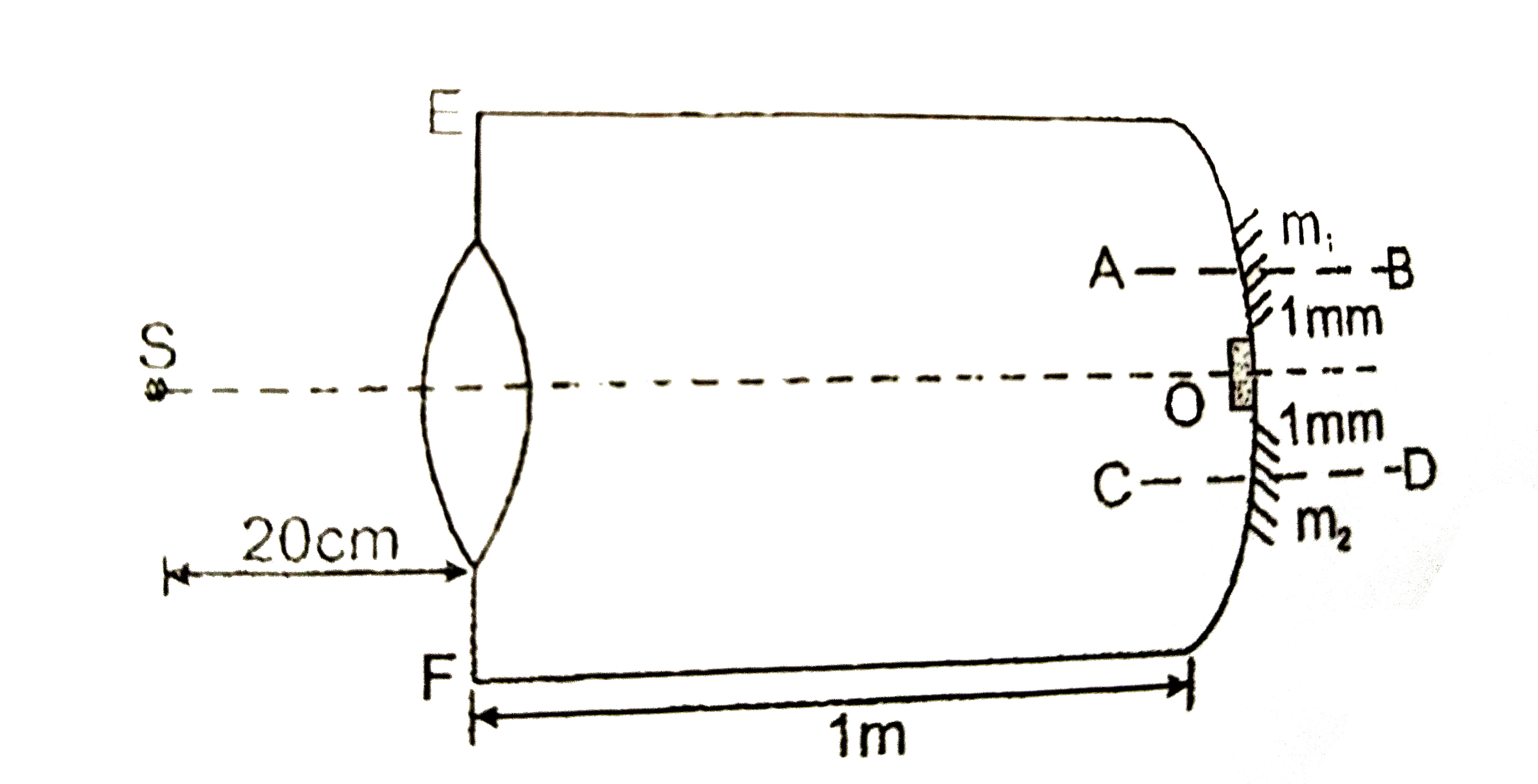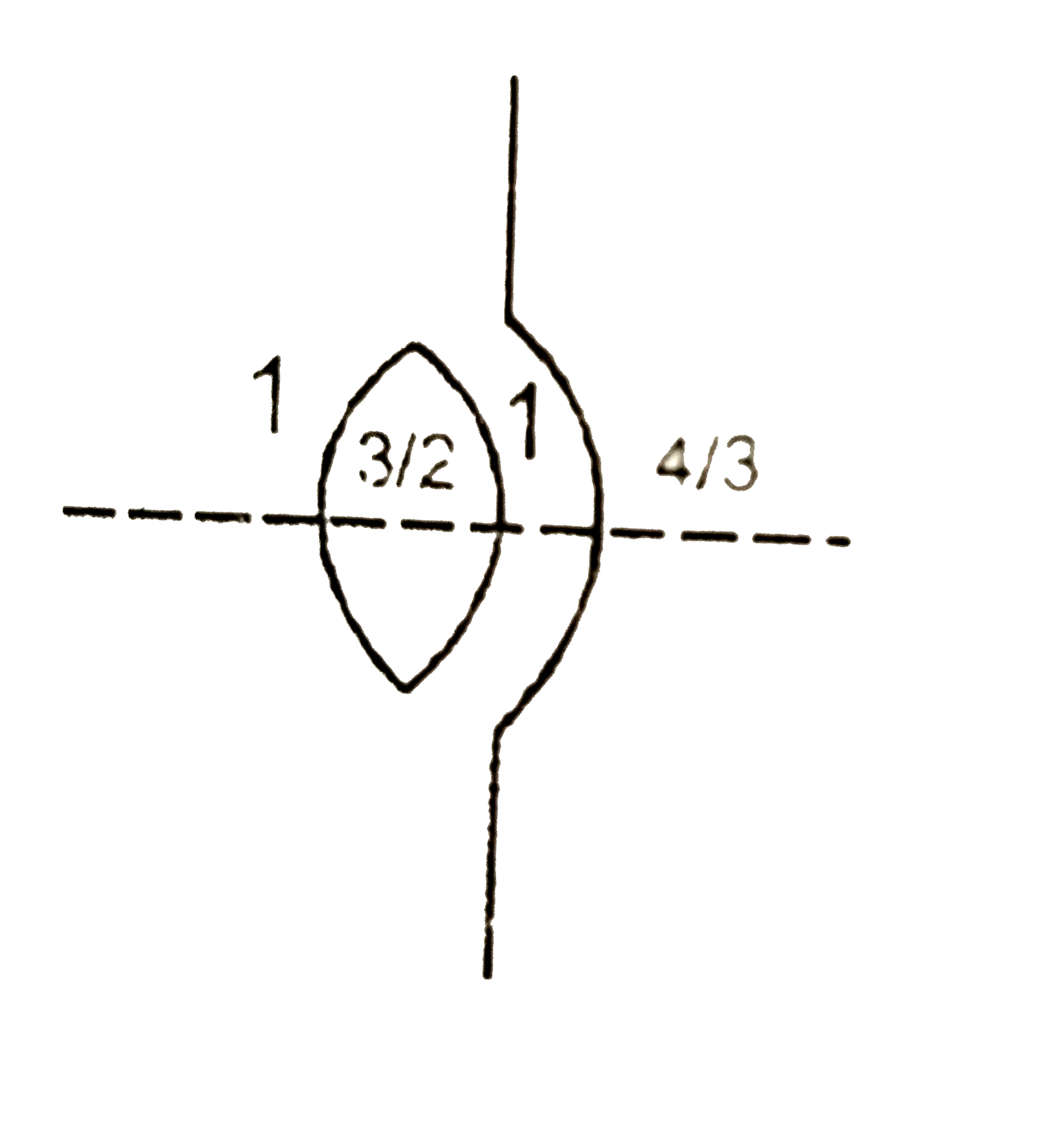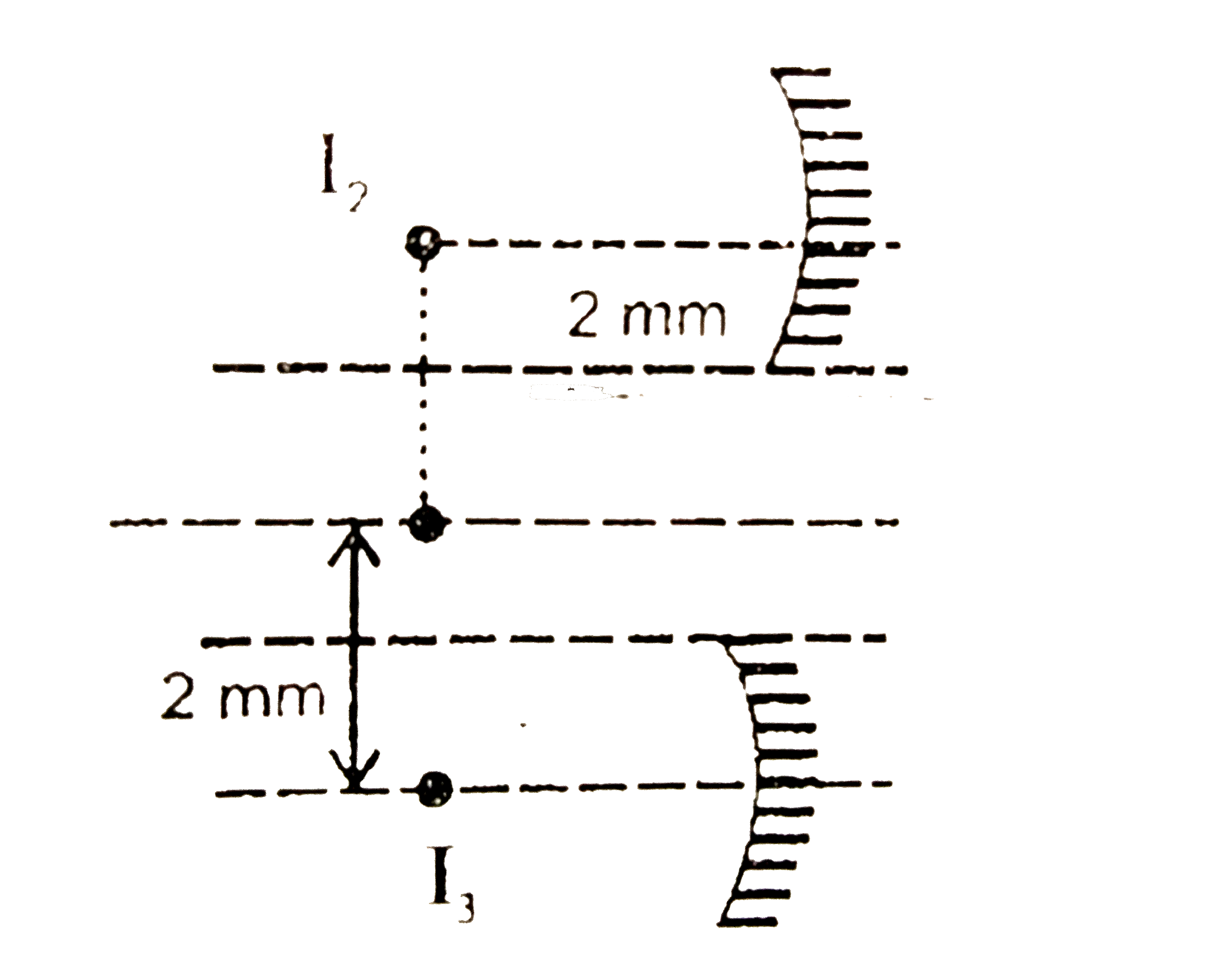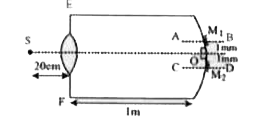An equil convex lens of focal length (in air) and is put at a small opening on a tube of length fully filled with liquid of concave mirror of radius of curvature is cut into two halves and placed at the end of the tube. are placed such that thir principal axis respectively are separated by each from the principal axis of the lens. slit placed in air illuminates the lens with light of frequency The light reflected from forms interference pattern on the left end of the tube. is an opaque substance to cover the hole left by Find :

(a) the position of the iamge formed by lens water combination.
(b) the distance between the images formed by .
(c) width of the fringes on
The correct Answer is:(a) behind the lens
(b)
(c)
Lets find out the radius of curvature of equi. Convex lens.
.
Now

for lins :
for surface of tube (of .)
.
(b) Now for mirrors.

As the object for the mirrors is at so the image will be at only
also.
magnifiction
so the final images are like.

so the distance between the images is .
(c) Now, these behave as the sources for fringe pattern.
.
Topper's Solved these Questions
Similar Questions
Find the focal length of a convex mirror of radius of curvature 1 m.
View SolutionAn object is placed 15cm in front of a convex lens of focal length 10cm. Find the nature and position of image formed. Where should a concave mirror of radius of curvature 20cm be position of the object itself ?
View Solution
Knowledge Check
An equiconvex lens of focal length 10 cm (in air) and R.I. 3/2 is put at a small opening on a tube of length 1 m fully filled with liquid of R.I. 4/3. A concave mirror of radius of curvature 20 cm is cut into two halves M1andM2 and placed at the end of the tube. M1andM2 are placed such that their principal axes AB and CD respectively are separated by 1 mm each from the principal axis of the lens. A slit S placed in air illuminates the lens with light of frequency 7.5×1014Hz. The light reflected from M1andM2 forms interference pattern on the left end EF of the tube. O is an opaque substance to cover the hole left by M1andM2. Width of the fringes on EF is (x×10)μm. Find the value of x.
 A5 mB3 mC6 mD4 m
A5 mB3 mC6 mD4 mFind the focal length of a convex mirror of radius of curvature 1 m.
A1.5mB0.5mC5mD1mA concave lens of focal length 20 cm placed in contact with ah plane mirror acts as a convex mirror of focal length
A10 cmB40 cmC60 cmD20 cm
A convex lens of focal length 10 cm is placed in contact with a concave lens of focal length 20 cm. The focal length of this combination of lenses will be:
View SolutionA convex lens of focal length 30 cm and a concave lens of focal length 0.6m are placed in contact. Find the power of the combination.
View SolutionA convex lens of focal length 20 cm is placed in contact with a concave lens of focal length 10 cm. What is the focal length and power of the combination ?
View SolutionAn object is placed at 0.06 m from a convex lens of focal length 0.1m. Calculate the position of the image?
View SolutionA convex lens of focal length 0.5 m and concave lens of focal length 1 m are combined. The power of the resulting lens will be
View Solution
